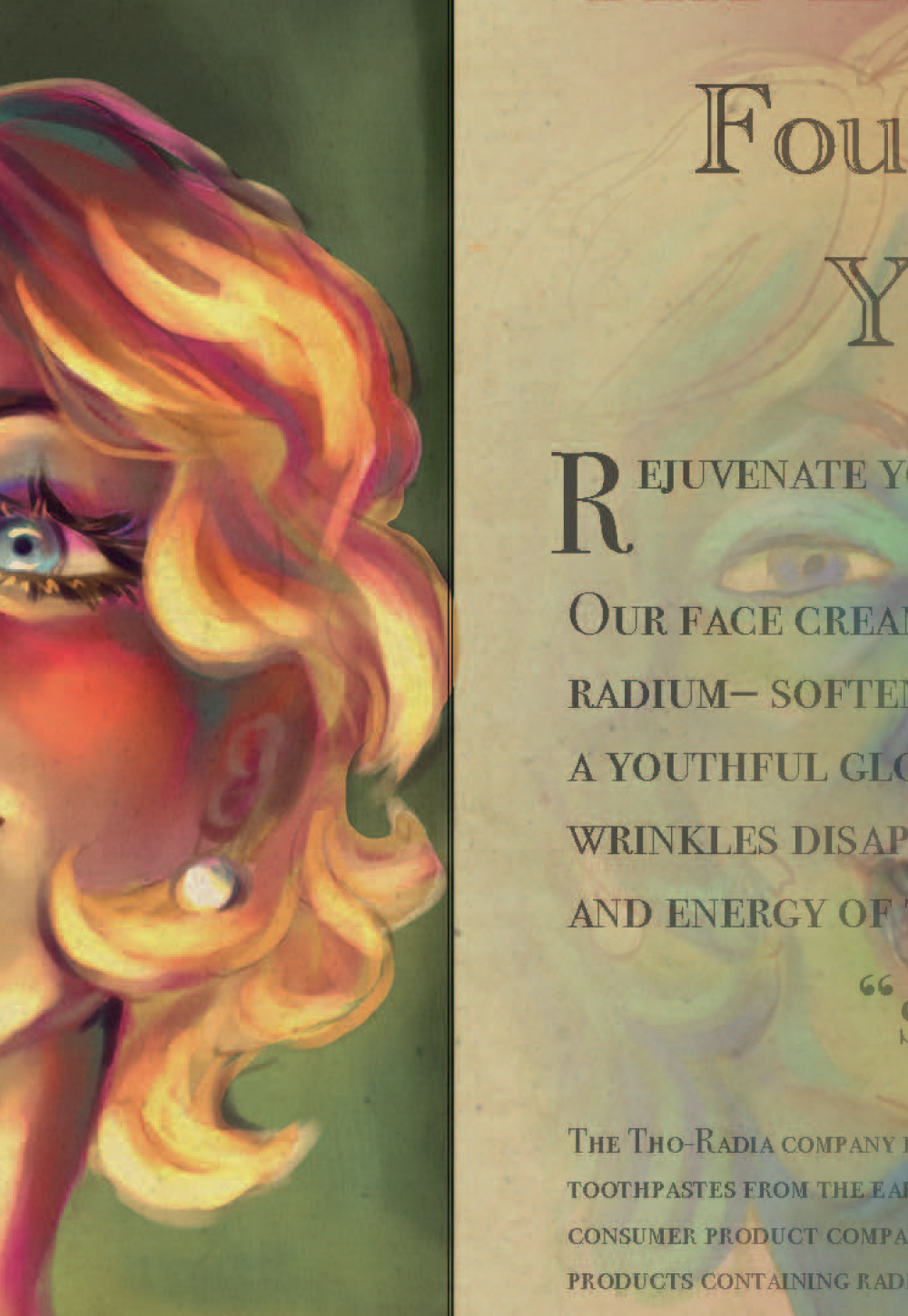
Abstract
This diptych is a satirical advertisement for a fictional face cream, inspired by and based upon a radium health craze during the early 20th century.
Figure 1. Radiation Rejuvenation

This diptych contrasts desired with more likely outcomes of an imaginary product, inspired by actual advertising of Tho-Radia,1 a French cosmetics company that promoted the beauty promise of its thorium- and radium-based skin care products.2 The company’s visual promotions featured the face of a woman that was lit from below, glowing beautifully yet mysteriously. This work is a creative variation on that iconic portrayal of white young womanhood, still widely recognizable and used today to promote allegedly science-based products of many kinds.
Figure 2. Anemia and Necrosis

The second image, juxtaposed to the first, de-romanticizes the ideals represented in the first image. As an artist, I’ve always been fascinated by pharmaceutical advertising. From vintage newspaper print media to today’s digital mix of misinformation and influencers, products have always vied for our attention. The appeal of the kind of advertising I explore here persists, and its early 20th-century expressions are worth reflecting upon today, as beauty continues to be used by manufacturers to draw our attention and prompt our purchases. Manufacturers such as the Radium Appliance Company of Los Angeles also advertised a variety of household products. Radium spas, pain-relieving radium pads,3,4 and irradiated baths and drinking water5 were promoted until their dangers were exposed in the1930s.6 My artistic interests focus on the uses of women’s bodies—especially faces—to bear the health risks of body images that are unattainable, especially over time.
References
-
Tho Radia. Museum of Radium. Accessed December 23, 2024. http://museumofradium.co.uk/tho-radia/
-
Tho-Radia items (ca 1950s). ORAU Museum of Radiation and Radioactivity. Accessed December 23, 2024. https://www.orau.org/health-physics-museum/collection/radioactive-quack-cures/pills-potions-and-other-miscellany/tho-radia-items.html
-
Radium spä (ca 1926-1930). ORAU Museum of Radiation and Radioactivity. Accessed December 23, 2024. https://www.orau.org/health-physics-museum/collection/radioactive-quack-cures/jars/radium-spa-1926-1930.html
-
Degnen’s standard radio-active solar pad (1915-1930). ORAU Museum of Radiation and Radioactivity. Accessed December 23, 2024. https://www.orau.org/health-physics-museum/collection/radioactive-quack-cures/radioactive-pads/degnens-standard-radio-active-solar-pad.html
- Braunold J. How pseudoscience generated US material and device regulations. AMA J Ethics. 2021;23(9):E721-E738.
- Martland HS. The occurrence of malignancy in radioactive persons: a general review of data gathered in the study of the radium dial painters, with special reference to the occurrence of osteogenic sarcoma and the inter-relationship of certain blood diseases. Am J Cancer. 1931;15(4):2435-2516.



